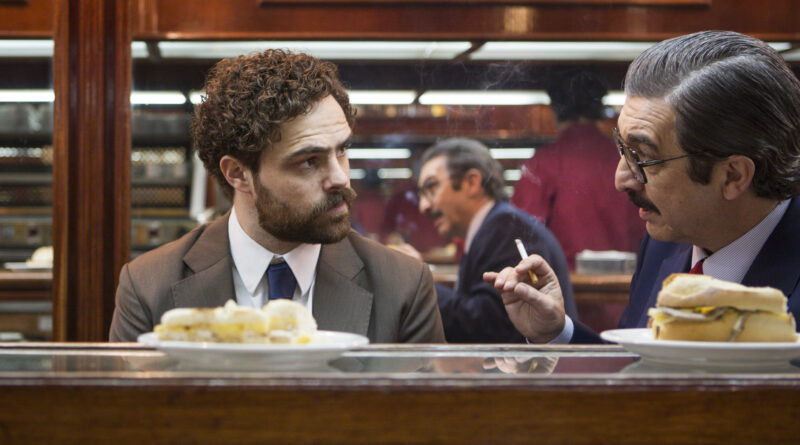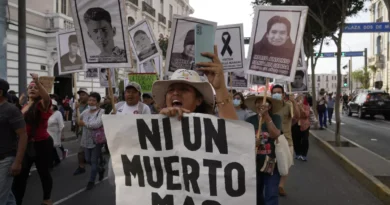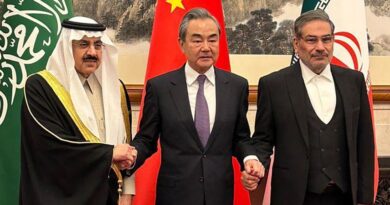"Argentina, 1985" shows that there is still much to be discussed in the post-dictatorship process
CECILIA VALDEZ
Buenos Aires
When it seemed that little news could be given in the discussion on human rights and
Argentine post-dictatorship process, the film "Argentina, 1985" shows that there is still a long way to go.
say and debate and that, like any social process, its forms of representation also vary
Changing.
The film narrates one of the most important historical events of the democratic transition, such as the Trial of the Military Juntas of the last dictatorship. “Argentina, 1985”, directed by Santiago Miter and starring, among others, Ricardo Darin, focuses on the way in which the Trial was organized and the difficulties that those who shouldered this task had to face. "1985" -as it is popularly known in Argentina-, is a fiction based on real events, and precisely at this point, it raises dust and divides opinions for and against, with more or less nuances, of course.
On the one hand, there are those who believe that it is inexcusable that he has put aside the fight of human rights organizations to the detriment of the individual hero, embodied in the figure of prosecutor Julio Cesar Strassera (Darin), or has not rigorously adhered to to events or speeches. And on the other, those who maintain that they are licenses that can be given in a film based on real events but that is still fiction.
“1985”, co-scripted by Miter and Mariano Llinás and co-produced by Amazon Prime Video, Kenya
Films (del Chino and Ricardo Darín) and La Unión de los Ríos (founded by Miter himself and others) and
Infinity Hill (Axel Kuschevatzky and partners), was released with enormous success in theaters on the 29th of
September, and October 21 on Prime Video. The few days between the theatrical release
and its debut on the platform was a subject of dispute between the large theater chains and the
developers, and this meant that it was not screened in all theaters. Even so, the furor was such
that it caused, which is still successfully held in many movie theaters in the country today. The film became the national production with the most viewers so far this year. Internationally, it has also done very well, not only because it has been pre-selected to compete for the Oscars, but also because it won the Audience Award at the San Sebastián Festival and will compete at the Goya Awards for Best Ibero-American Film. Last Tuesday he received the Golden Globe for the best non-English language film.
At a time when hate speech and denialists abound here and there, the film
de Miter came to show, not only that other debates are possible, but that many and many are
willing, and willing, to reflect on what happened, and on a past that is not wanted
repeat, as witnessed by one of the most repeated slogans of the Argentine post-dictatorship process
and that, precisely, it is used in Strassera's final argument in the Trial when he states:
"Gentlemen Judges, Never again." Except for some late night -and although we are in a time
prodigal in late nights-, in Argentina today there is a consensus -created from the
struggle of human rights organizations - regarding the need to judge the genocidal
responsible for the last military dictatorship, and even, although to a much lesser extent, it has also been possible to advance with some civil responsibilities. “We were already filming the
film when we began to see that certain figures of Argentine politics began to
establish hate speech and denialists”, says Santiago Mitre, the director. “we gave ourselves
realized that it was important to talk about human rights, the horrors of the dictatorship, the
collective, youth and political struggle, although it was not something I had on my radar when I
I started developing the film.”
The film focuses on the story of prosecutors Julio Strassera, played by Ricardo Darín, and
Luis Moreno Ocampo, by Peter Lanzani, who, together with a young team, had to carry out a
meticulous work of collecting evidence that allowed them to accuse and convict some of the
responsible for the Military Juntas of the dictatorship. And it is there where some, like Eva Basterra,
daughter of Víctor Basterra -one of the testimonials of the Trial that the film uses-,
doubts the value of the reconstruction that is made, or at least its rigor. "When I saw the scene of
my old man was a hard blow, ”says Eva. "I still don't understand what he wanted to show himself,
because in my old man's trial the lawyers for the soldiers questioned his place as a worker in
ESMA and my old man's response in the film is that he was an employee because they forced him to,
but all doubtful and fearful, when at the trial my old man was very forceful and told them: 'I
at a job I resigned and they pay me the settlement, instead, in this job if I say that
resigned, they kill me. This wasn't a job.' There is something that I understand that has to do with
certain licenses from a movie based on real events, but when you talk about a character who
existed, and it made a difference, in a certain way that construction is disrespectful.”
Basterra was detained at the Navy School of Mechanics (ESMA), one of the most
important clandestine centers of detention and torture, between 1979 and 1983. For their
knowledge of photography (he was a graphic worker) was used as slave labor, and this
allowed him to take photos of both the repressors and the kidnapped, and keep copies when
They began their temporary outings. In 1984 he presented all the evidence in court and his
Testimony was central to the Trial. He died on November 7, 2020 having dedicated his life to
the search for truth and justice. A few days after the premiere of the film, Eva and her
sister released a letter in which they expressed their discontent with the way in which
the testimony of his father was treated. "I still don't find sense in fictionalizing what happened to my old man from
that way because you have 5 hours of testimony that are on YouTube, I don't understand then
Why put those words in his mouth”, reflects Eva. "I find the story interesting.
What does he do about how the Judgment was built -because besides, I didn't know all that-, and
some characters that I don't know if they existed or not, but the survivors are all real and their
testimonials are literal.”
According to Mitre, although the Judgment could be approached from different places, and all of them were very
interesting, they opted to focus on the figure of Prosecutor Strassera, in Moreno
Ocampo and his military family, in Justice turning its back on the prosecution, and in how it is
This situation forced them to form a working group of willing young people but almost without
experience, with the aim of giving the film a more popular character that will enable greater
identifications by the public. “That does not exhaust the different entry points that there are of a
done”, adds Miter. “There is a mistake that is sometimes made in political cinema that has to do with
with which a film should exhaust or include all the possibilities of a story in itself. and in that
there is something that is not taken into account, which is that working on a topic is not closing it, but opening it, entering through a door, and pointing out all the other hundreds of entrance doors that exist
so that the people who are going to see the film can enter into that vast subject.”
The film also chooses to show a series of testimonials that compellingly illustrate
the horrors of the dictatorship and the greatest humiliations to which a being can be subjected
human, but without the need to use morbidity but using the story of the victims and their
testimony at trial. It also appeals to humor, something that the viewer appreciates because it allows
take a breath in the midst of the enormous tension generated by these issues. In this sense, Miter admits
that working on the issue of slave labor, and in particular the case of Basterra, was a
real challenge. “I understand the feeling of the daughters of Basterra, and they are absolutely right. The
film, unfortunately, it cannot say everything that it should, but in any case I do not think
that sows a blanket of doubt about Basterra, but uses it as an example to understand what
what it meant to be a slave within the ESMA. In any case, the one who sows the cloak of doubt
it is the defense attorney, who is clearly one of the villains of the film, and not the Prosecutor's Office that
used as an important witness. The subject is difficult, thinking about Basterra and who he was, is something
that the narrative of memory must do better, and my wish is that it be so, we just
we are giving a brush."
For Eva, the fact that they did not choose to focus on the struggle of the organisms, or that they did not
has strictly respected his father's speech, does not invalidate the whole story. “It generates many
debates about something that happened forty-odd years ago with very young kids to whom this
It's far away, and that's good. But as a militant and as Victor's daughter, there are things that
I can remain silent because it seems to me that the construction of this story is very biased. It seems that
Strassera and Moreno Ocampo are the first to discover and speak about the disappeared,
when it was something that the organizations had been denouncing for a long time. But again,
beyond all the criticisms that I can make, it generates a lot of dialogues and debates
necessary. Then it's up to us to go to the schools, when the movie is on, and talk about what
missing or what is said, but with greater accuracy. From that place I think it is a tool
super necessary at this time of heyday of a right that, by the way, is very young.”
As was said, "1985", in addition to questioning a public more accustomed to the subject and knowledgeable about
its paths, opens debates in a younger public and in an international public, which, in
many times, he is forced to question himself about the post-dictatorship processes of his
own countries. “I believe that we have collaborated so that this issue can be put back on the agenda and,
From this, there is a particular interest in how not only the Trial of the Juntas was built, but also the
democratic transition or the struggle to recover democracy from the dictatorship and there, for
Of course, the organizations are the main beacon of reference”, concludes Mitre. "Of all
ways, it seems to me that all the discussions that are generated around the film are
important, they enrich the film, they enrich me as an author and they enrich the subject.
I am also very happy that the film has arrived at this time, and that it has been able to put into
mouth, and on the covers of newspapers and magazines human rights. That seems to me a triumph of cinema and
of this particular film in relation to the multiplicity of hate speech that occurs in
Argentina and in many other parts of the world.”













